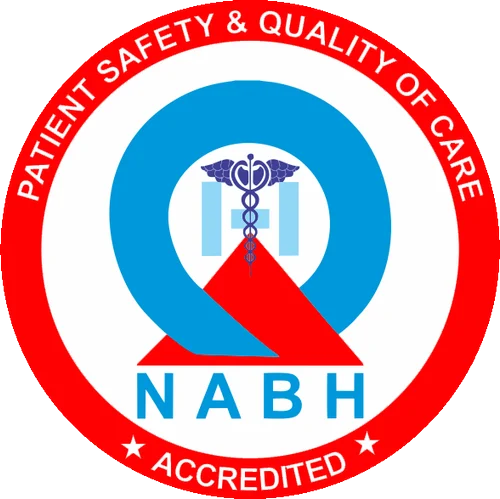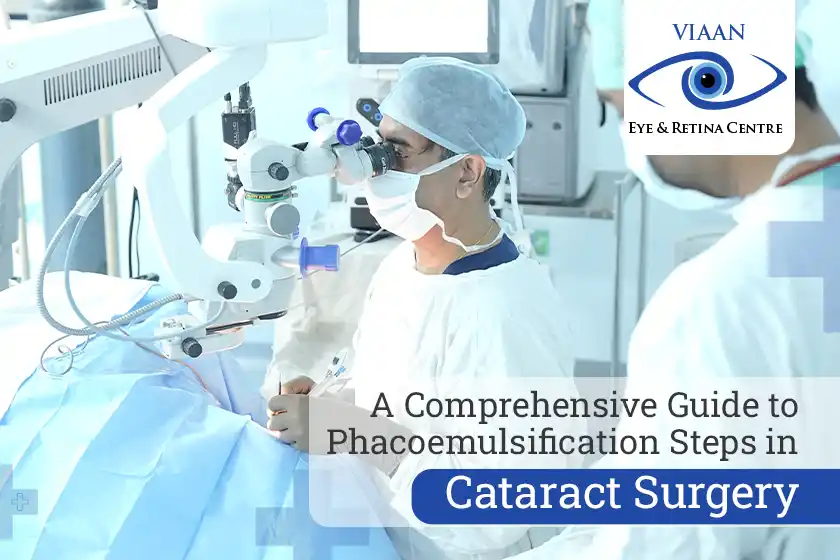Cataract surgery is a life-changing procedure that has helped millions of people regain their clear vision. Phacoemulsification is the most common and advanced technique used in cataract surgery today. Cataracts, those cloudy patches in our eye’s lens, are a common part of aging. In fact, by age 80, more than half of all Americans either have a cataract or have had surgery to get rid of one. But don’t worry, cataract surgery is one of the safest and most effective procedures out there.
Let’s take a closer look at the main type of surgery, called Phacoemulsification steps, so you know what to expect.
What is Phacoemulsification?
A cataract develops when proteins in the eye’s lens break down and clump together, causing the lens to become cloudy and obstructing light from reaching the retina. This leads to blurry vision, faded colors, and difficulty seeing at night.
Phacoemulsification steps, also known as phaco, involves using ultrasonic energy to break up the cloudy lens into tiny fragments, which are then gently suctioned out of the eye. This technique has significantly improved the safety and recovery time of cataract surgery.
Why Phacoemulsification?
Phacoemulsification steps offers several advantages over older cataract surgery techniques. It is a minimally invasive procedure that requires only tiny incisions. This leads to faster healing, less discomfort, and a reduced risk of complications. Moreover, phacoemulsification allows for more precise lens removal and implantation, leading to better visual outcomes.
Why Phacoemulsification Steps are the Gold Standard
According to the World Health Organization, cataracts are the leading cause of blindness globally, responsible for over 50% of cases. Phacoemulsification has revolutionized cataract treatment, with over 98% success rates and minimal complications. It’s a quick outpatient procedure, often taking less than 30 minutes, with most patients experiencing improved vision within days.
Phacoemulsification Steps
- Anesthesia: Before the surgery begins, you will receive anesthesia to numb your eye and ensure a painless procedure. This may be in the form of eye drops or an injection.
- Incision Creation: Your surgeon will make tiny incisions on the side of your cornea, the clear front part of your eye. These incisions are typically less than 3mm in size.
- Capsular Opening (Capsulotomy): A circular opening is created in the front capsule of the lens, which holds the cataract. This opening allows access to the cataract for removal.
- Hydrodissection and Hydrodelineation: Fluid is injected to separate the cataract from the capsule and to create space for easier removal.
- Phacoemulsification: An ultrasound probe is inserted through the incision in the Phacoemulsification steps. This probe emits ultrasound energy, which breaks the cataract into tiny pieces. A suction device simultaneously removes these fragments.
- Irrigation and Aspiration: The remaining fragments are washed out of the eye using a balanced salt solution.
- Lens Implantation: After the cataract is removed, a foldable intraocular lens (IOL) is inserted through the incision. This artificial lens unfolds inside the eye, replacing the natural lens.
- Sealing the Incisions: In most cases, the tiny incisions are self-sealing and do not require stitches.
What Happens After Surgery?
Most people experience a significant improvement in their vision within a few days of surgery. You’ll likely use eye drops for a few weeks to prevent infection and reduce inflammation. Your doctor will schedule follow-up appointments to monitor your progress.
Important Note: While Phacoemulsification steps is generally safe and effective, like any surgery, there are potential risks. These can include infection, swelling, bleeding, and in rare cases, vision loss. Discuss these risks with your doctor to make an informed decision.
Benefits of Phacoemulsification Steps
- Minimally Invasive: The small incision and self-sealing technique reduce the risk of complications and promote faster healing.
- Improved Precision: The use of ultrasonic energy allows for precise removal of the cataract, minimizing trauma to the eye.
- Faster Recovery: Most patients can return to their normal activities within a few days after Phacoemulsification steps with complete visual recovery in a few weeks.
- Reduced Risk of Astigmatism: The small incision and self-sealing technique minimize the risk of inducing astigmatism, an imperfection in the curvature of the eye.
- Customizable IOLs: Patients can choose from a variety of IOLs, including those that correct for presbyopia (age-related farsightedness) and astigmatism.
Who is a Good Candidate for Phacoemulsification Steps?
Most people with cataracts are good candidates for this procedure. However, your eye doctor will conduct a thorough evaluation to ensure phacoemulsification is the best option for you.
Conclusion
Phacoemulsification has revolutionized cataract surgery, making it a safe, minimally invasive, and highly successful procedure. If you are considering cataract surgery, understanding the Phacoemulsification steps involved in phacoemulsification can help you make informed decisions about your treatment. If you feel you have any eye problem you should consult with the doctor, Viaan eye & retina centre stands as a leading eye care hospital in Gurgaon. We have a team who are experienced with all types of cataract surgery with high success rates. So, consider the eye checkup regularly for healthy vision
Frequently Asked Questions
Q: How long does phacoemulsification steps take?
The actual surgery typically takes only 15-30 minutes. However, you should plan for a longer appointment to allow for preparation and recovery time.
Q: Will I feel any pain during the surgery?
No, you shouldn’t feel any pain. Your eye will be numbed with anesthesia (either eye drops or an injection), and most people report feeling only mild pressure.
Q: When can I expect to see results after surgery?
Many patients notice a significant improvement in their vision within a few days of Phacoemulsification steps. However, complete visual recovery can take a few weeks as your eye heals and adjusts to the new lens.
Q: Are there any restrictions after surgery?
You will likely need to use eye drops for a few weeks and avoid strenuous activities for a short time. Your doctor will provide specific instructions based on your individual case.
Q: What are the potential risks and complications of phacoemulsification steps?
While rare, potential complications can include infection, swelling, bleeding, and in very rare cases, vision loss. It’s important to discuss these risks with your doctor before surgery.
Q: How long does the implanted lens (IOL) last?
The IOL is designed to last a lifetime and should not need to be replaced.
Q: Can I have both eyes done at the same time?
Typically, each eye is done separately, usually with a few weeks in between. However, in some cases, your doctor may recommend having both eyes done on the same day.
Q: What is the success rate of phacoemulsification steps?
Phacoemulsification has a very high success rate, with over 98% of patients experiencing improved vision after surgery.
Q: Does insurance cover phacoemulsification surgery?
Most insurance plans cover cataract surgery, including phacoemulsification steps, as it is considered a medically necessary procedure.
Q: When should I see my doctor if I think I have a cataract?
If you notice any changes in your vision, such as blurry or cloudy vision, faded colors, or difficulty seeing at night, schedule an appointment with your eye doctor as soon as possible. Early detection and treatment of cataracts can help preserve your vision.



